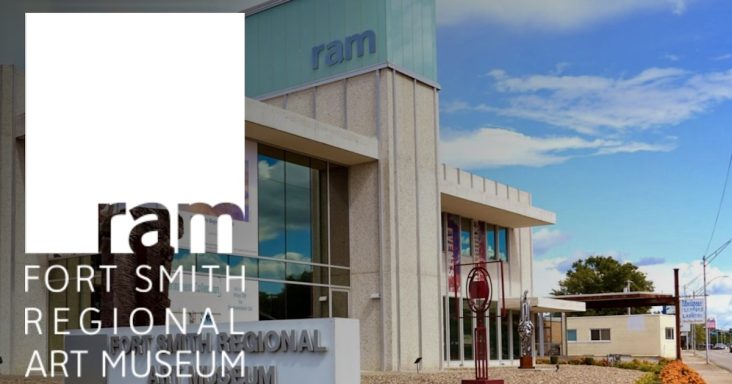‘Core documents’ part of Fort Smith Regional Art Museum’s stability effort
by May 30, 2025 3:59 pm 449 views

Editor’s note: This is the second of two stories about the Fort Smith Regional Art Museum. Link here for the first story. Link here for the first story.
When the Fort Smith Regional Art Museum Board of Directors tapped Michael Hall in January 2023 to be the museum’s director, a “strategic planning” mandate focused on stability and growth was clear, according to Hall.
“The people that hired me were focused on strategic planning,” Hall said. “Accreditation was more a goal than in motion.”
Hall, who has many years of museum experience, including working with a Smithsonian-affiliated science museum, said museum staff have been putting goals in motion.
“The big thing is, (FSRAM) had never put the core documents in place,” said Hall. “They knew everything, but nobody had ever written things down. The first two years, I did nothing but write. Three hundred pages, operations, emergency plans, financial management.”
Besides helping the museum establish its 501c(3) designation, as well as making it more attractive to grantors outside the region, formalizing the core documents demonstrated the museum’s commitment to the professional standards espoused by the American Alliance of Museums, Hall said.
Besides administrative changes, the museum has upgraded its facilities and improved staff training. Climate control and lighting must meet industry standards, and staff are trained in the proper care and handling of valuable artifacts. Much like a home inspection, AAM representatives will visit FSRAM this summer to review implementation of the standards. If AAM accreditation is granted, Hall said the museum will rise in national prominence, attracting more financial support and more Picasso-level exhibits.
Hall and museum staff also remain focused on the community roots. Hall knows and appreciates the fact that the museum began 77 years ago as a door-to-door fundraising campaign, with money collected in cans.
“Citizens supporting us 60 years ago are still with us today,” he said, emphasizing what he calls “the right kind of growth. Everybody here is thinking about the next step we can take, We need to keep the organic (growth) in mind.”
The envisioned facility expansion seeks to maintain a balanced approach between community roots and being an art museum with national art standards.
“This summer we hope to have completed a feasibility study. We need to come to consensus with professionals,” said Hall, referring to architect Galen Hunter with MAHG Architecture.
An expanded facility may include a multipurpose addition of around 10,000 square feet, and updates to the existing building. For now, specifics are unavailable.
“It’s hard to detail that now because that is what we are investigating,” Hall said.
